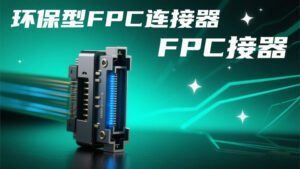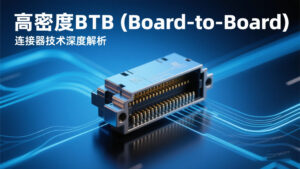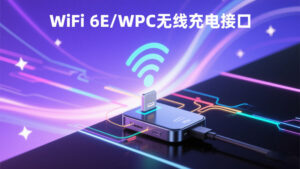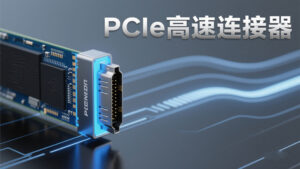With the development of consumer electronics, automotive electronics and medical equipment industries towards lightweight and high integration, the market demand for flexible connectors (FFC/FPC) continues to grow.FFC (Flexible Flat Cable) and FPC (Flexible Printed Circuit), as the key interconnecting components, have become an indispensable part of modern electronic devices. FFC (Flexible Flat Cable) and FPC (Flexible Printed Circuit), as key interconnect components, have become an indispensable part of modern electronic devices due to their advantages of thinness, flexibility, and high-density wiring. In this article, we will discuss the latest technological advances, application scenarios and future market trends of FFC/FPC connectors.
1. Technical evolution of FFC/FPC connectors
1.1 Ultra-thin and high-reliability design
In recent years, folding screen phones, wearable devices and other emerging electronic products have put forward higher requirements for the thickness and durability of connectors. For example, a well-known electronics manufacturer recently introduced ultra-thin FFC connector, the thickness of only 0.2mm, and the use of special polymer materials to enhance bending resistance, can withstand more than 200,000 times the bending test, significantly improving the life of the device.
FPC connectors, high-density interconnect (HDI) technology has become mainstream, line width / line spacing (L / S) has exceeded 30 μm, making the connector in a smaller space to achieve more complex signal transmission, suitable for 5G communications, AR / VR and other high-frequency application scenarios.
1.2 High-speed transmission and high-frequency performance optimization
With the popularization of 5G, AI and Internet of Things (IoT) technologies, the demand for data transfer rates is surging. The new generation of FFC/FPC connectors support high-speed protocols such as PCIe 4.0 and USB4, with some high-end products offering transmission rates of up to 40Gbps or more. In addition, by optimizing the impedance matching and shielding layer design, the loss of FPC connectors in high-frequency signal transmission is significantly reduced, which is suitable for millimeter-wave radar and satellite communication equipment.
1.3 Trends in environmental protection and sustainability
The global electronics manufacturing industry is accelerating its transition to greening, and the environmental performance of FFC/FPC connectors has attracted much attention. For example, some manufacturers have introduced halogen-free, lead-free FPC connectors that comply with EU RoHS 3.0 and REACH regulations and use recyclable materials to reduce carbon footprint. This trend is particularly evident in the automotive electronics and medical device sectors, where environmentally friendly connectors are becoming the industry standard.
2. Analysis of key application areas
2.1 Consumer electronics: folding screen devices and wearable technology
Folding screen cell phone is a typical application scenario for FFC/FPC connectors. As the screen needs to be bent frequently, the traditional rigid PCB cannot meet the demand, and the ultra-thin FPC connector can realize the stable connection between the screen and the motherboard. Market research organization DSCC predicts that global folding screen phone shipments will exceed 50 million in 2025, further boosting FFC/FPC demand.
In addition, wearable devices such as TWS headphones and smartwatches rely on miniaturized FPC connectors for signal transmission and sensor integration in compact spaces.
2.2 Automotive Electronics: Intelligent Driving and New Energy Vehicles
Under the wave of automotive intelligence, high reliability FPC connectors are required for in-vehicle displays, ADAS (Advanced Driver Assistance Systems) and Battery Management Systems (BMS). For example, Tesla and other new energy vehicle enterprises use multi-layer FPC to replace traditional wiring harnesses, reduce body weight and improve energy efficiency. According to TrendForce statistics, 2024 in-vehicle FPC market size will reach 2.5 billion U.S. dollars, annual growth rate of more than 15%.
2.3 Medical devices: miniaturization and high precision requirements
Medical electronic devices (e.g. endoscopes, implantable sensors) require high miniaturization and biocompatibility of connectors. FPC connectors can adapt to complex human environments by virtue of their flexibility and meet medical grade EMI shielding requirements at the same time.
3. Market prospects and challenges
3.1 Continued expansion of market size
According to Grand View Research, the global FFC/FPC connector market size of about $12 billion in 2023 is expected to exceed $20 billion in 2030, with a compound annual growth rate (CAGR) of 7.5%. The growth driver is mainly from the Asia-Pacific region, especially China, South Korea and other consumer electronics and new energy vehicle manufacturing centers.
3.2 Technological Challenges and Competitive Landscape
Despite the promising future, the industry faces the following challenges:
- High frequency signal loss: How to further improve the stability of high-frequency transmission is a key topic in the era of 5G and AI.
- cost pressure: High-end FPC connector materials (e.g. polyimide film) are more expensive, affecting the speed of popularization.
- Intensified international competition: Japanese and U.S. companies (e.g., Sumitomo Electric and Molex) dominate the high-end market, and domestic manufacturers are accelerating their technological catch-up.
4. Conclusion
FFC/FPC flexible connectors, as the core component of miniaturization and flexibilization of electronic equipment, technology iteration and market demand complement each other. In the future, with the rapid development of folding devices, smart cars and medical electronics, ultra-thin, high-speed, environmentally friendly connectors will become the mainstream of the industry. Enterprises need to continue to invest in research and development to meet the dual challenges of high-frequency transmission and cost optimization, to seize the market opportunity.




